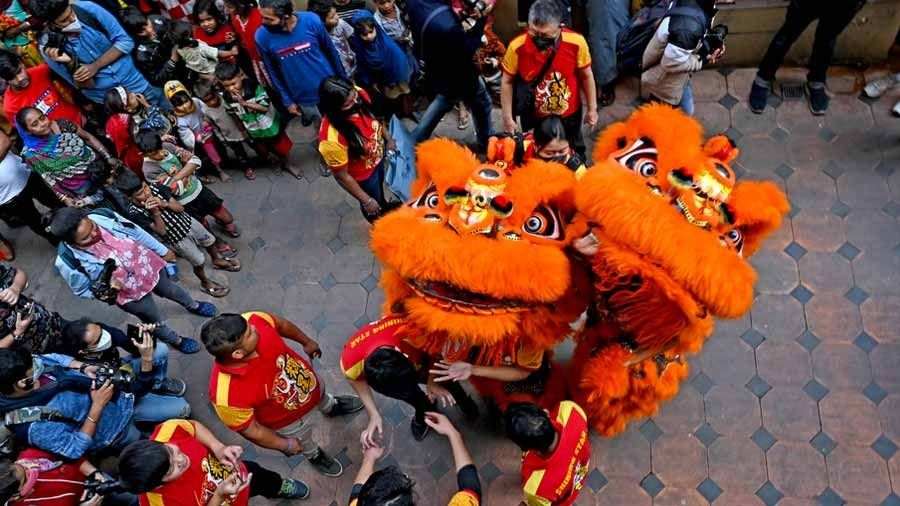In recent times, there have been several instances of tigers sneaking into the villages of the Sundarbans. And today (February 1), lions will sneak into the streets of Kolkata. But don’t be alarmed! These lions are not coming from Africa – rather they have a Chinese connect.
According to Chinese legend, hungry lions come down from the mountains or rise from the sea at the beginning of spring. Although the hungry lions look ferocious, they are afraid of the colour red and loud sounds. They are happy when they are fed their favourite lettuce leaves. Yes, this is the Chinese New Year celebration, which generally takes place in end-January or early February.
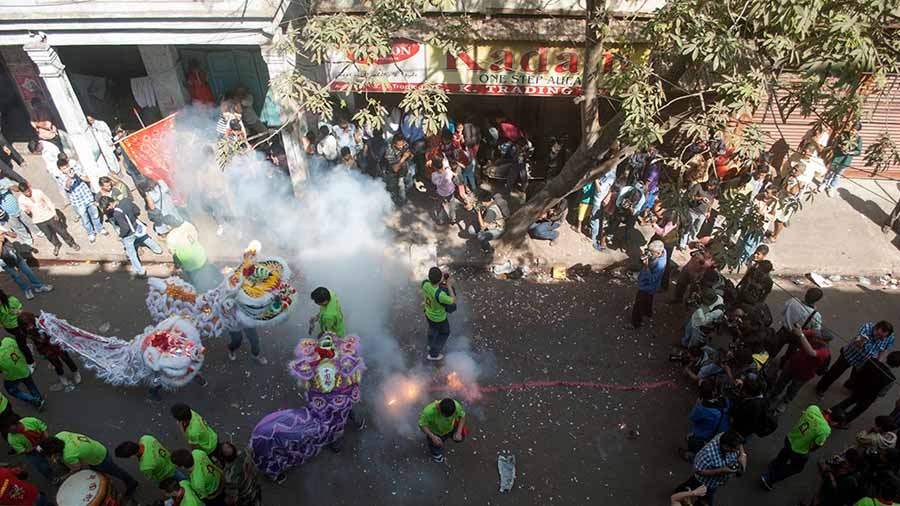
With lions, dragons and crackers, Tiretti Bazar in central Kolkata comes alive during this time of the year Rangan Datta
Revellers around the world, mostly dressed in bright red, celebrate it with a lion and dragon dance, along with the beating of drums and bursting of crackers. Kolkata, which has a Chinese connect for over two-and-a-half centuries, is no exception.
Chinese presence in Calcutta dates back to the 1780s, when a trader named Tong Achew set up a sugar factory near present-day Budge Budge. The place is now known as Achipur, after Achew. After Achew’s death, the Chinese soon deserted Achipur and headed for Kolkata, which offered better opportunities.
They settled in Tiretti Bazar of central Kolkata. Later, a large section moved to Tangra on the eastern part of the city. Tiretti Bazar came to be known as the Old Chinatown, while Tangra was the new Chinatown. Today, the majority of the 2,000-odd Chinese, who still call Kolkata their home, are settled in these two areas.
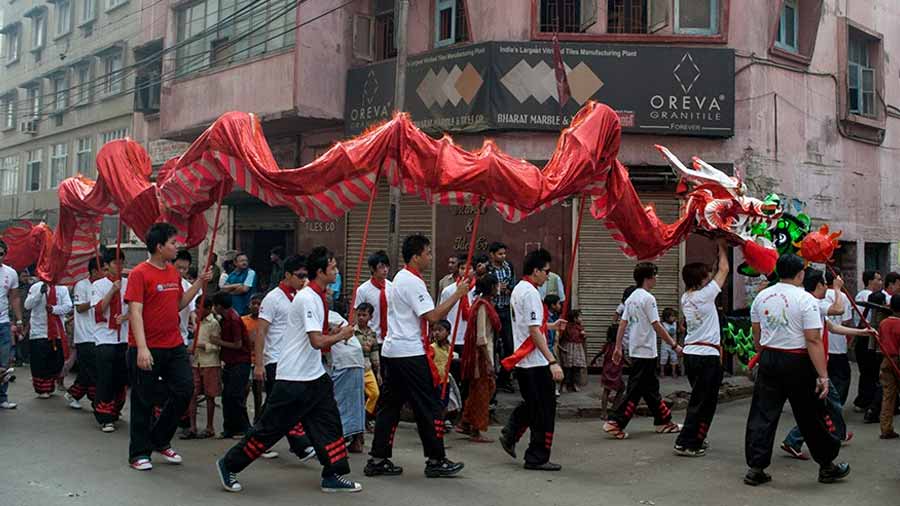
The dragon is controlled by at least six to eight people Rangan Datta
The Chinese New Year festival starts a couple of days before the New Year and continues for two weeks. Prior to the New Year, stage shows are held in the evening in both localities. The day of the new year is marked with a dragon dance on the streets. The next two Sundays are marked with a pilgrimage to Achipur.
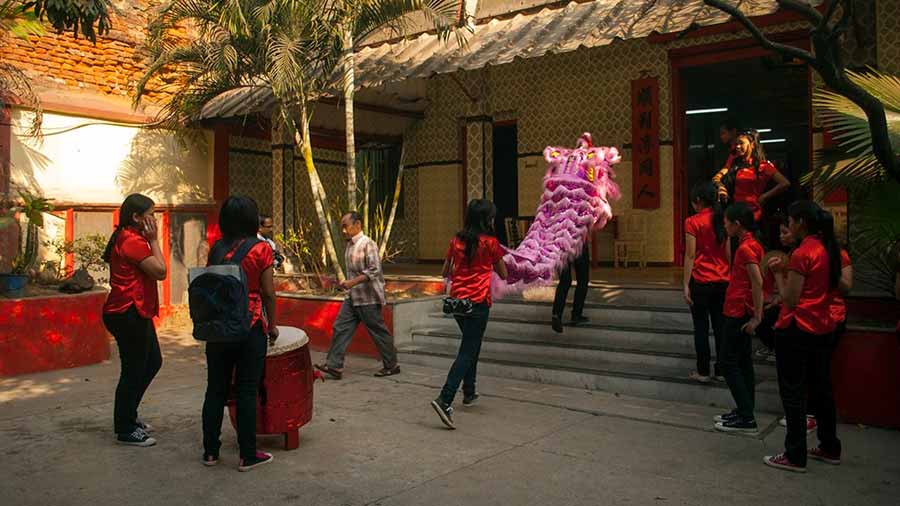
Chinese New Year celebrations in Nam Soon Church Rangan Datta
On the morning of the New Year, different Chinese clubs come out with their lions and dragons, accompanied by the beating of drums and cymbals. There is always a competition to outrun the other clubs. The lion is controlled by two dancers inside the frame. The dragon, on the other hand, is operated by at least six to eight people, who guide it from the outside with the help of sticks. The party, dressed in red, makes its way through the winding lanes of the Chinatowns and bursts crackers at regular intervals.
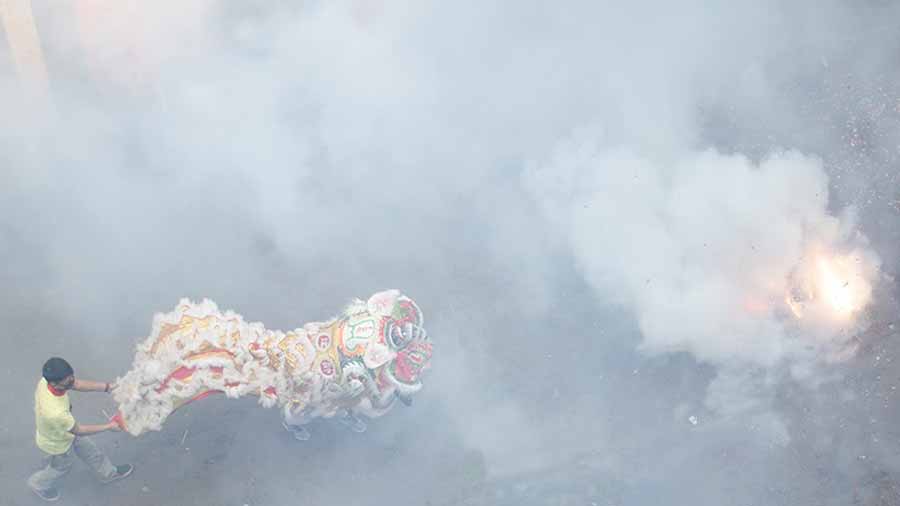
Crackers always accompany the lion and dragon dance Rangan Datta
They visit Chinese business establishments and even residences to collect money. But the money is not handed over directly. The money is put inside a red envelop that is enclosed within a bunch of lettuce leaves. The entire thing is suspended high with the means of a rod and thread. The lion dancers’ group forms a human pyramid – with the dancers on top reaching for the lettuce leaves. The money collected is divided amongst the club members.
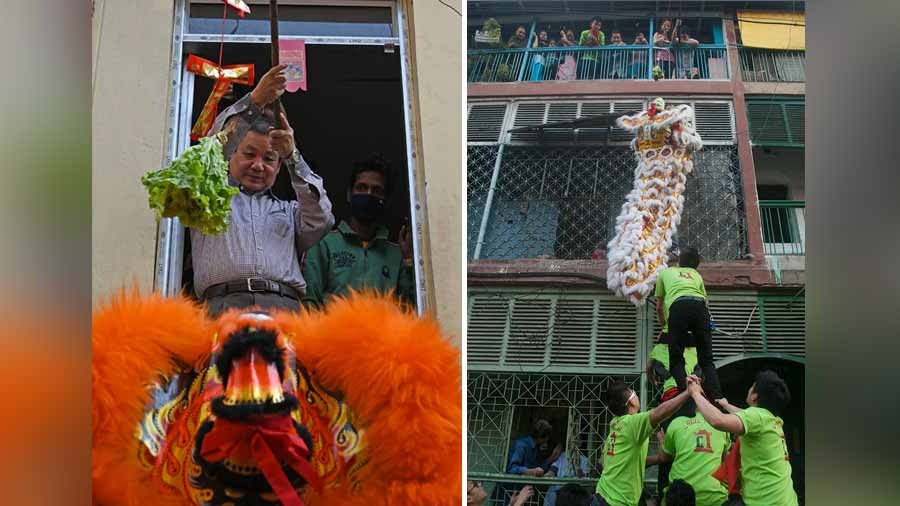
Dancers form a human pyramid to reach the lettuce leaves with money inside Amit Datta/Rangan Datta
On the next two Sundays after the New Year, the Chinese community converges at Achipur. They visit the lone Chinese temple there, which is dedicated to the god and goddess of the Earth. Candles and incense sticks are lit and the table in front of the altar is laid out with an amazing spread – ranging from chicken and whole roasted pig to bottles of wines and heaps of fruits and nuts.
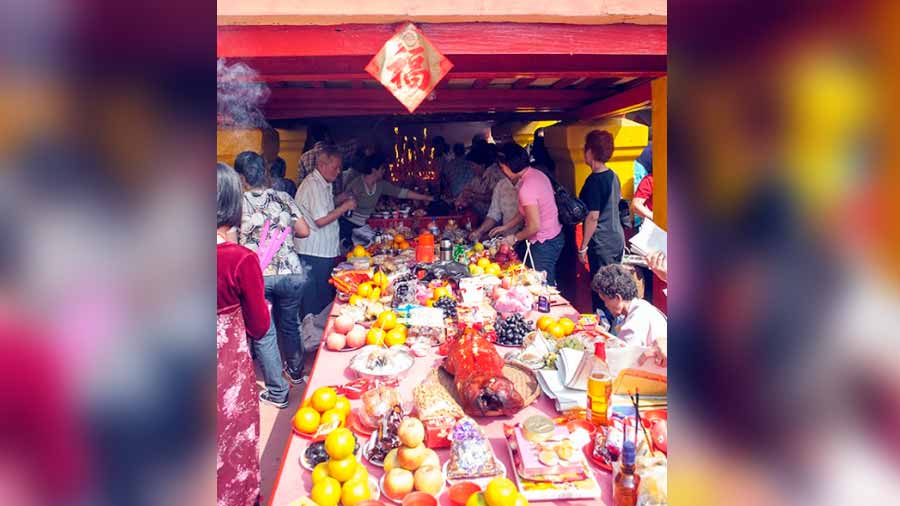
The feast at Achipur’s lone Chinese temple Rangan Datta
The visit to the temple is followed by a visit to Achew’s grave. The red horseshoe-shaped grave overlooks a bend in the Hooghly River. Here also the Chinese pay tribute to the man who started it all by lighting candles and incense sticks.
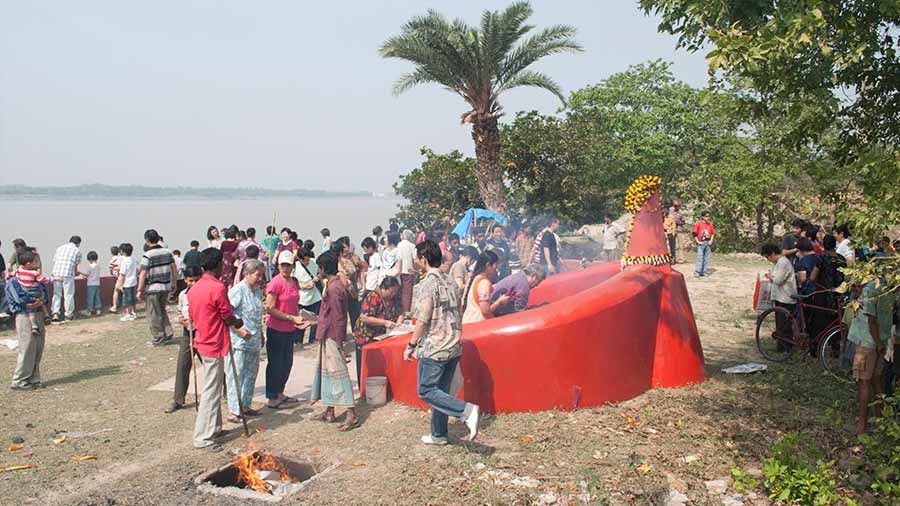
Tong Achew’s grave in Achipur Rangan Datta
Prior to the India-China War of 1962, whole vessels were chartered to bring the Chinese community to Achipur. The decks even had food and gambling stalls. The New Year in Achipur was celebrated with a dragon and lion dance to the tune of hundreds of drums. The river has long silted up, the government has long imposed a ban on gambling and young Chinese are leaving Kolkata for greener pastures. Today, the dragon-and-lion dance has stopped in Achipur, but on these few celebratory days, the sleepy hamlet regains its lost charm.

Devotees light candles and incense sticks at the Achipur temple Rangan Datta
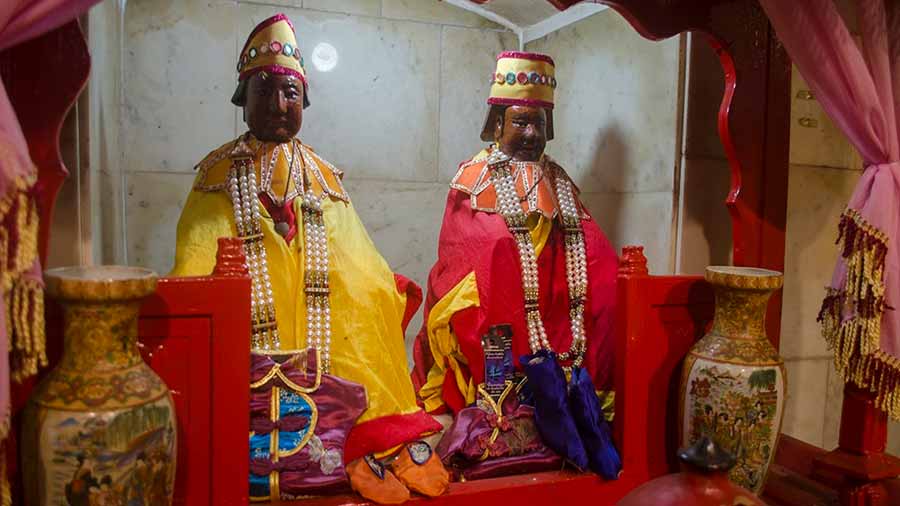
The idols inside the temple Rangan Datta
This Chinese New Year marks the year of the tiger. In Kolkata, apart from the street lion-and-dragon dance, there are a few more events planned. The Pei May Chinese High School in Tangra will host a Chinese food festival on February 4 and 5, from 2pm to 10pm, along with live lion dance sessions. Several Chinese restaurants in the city are also coming up with new menus and some live shows.
Rangan Datta is a mathematics and management teacher by profession and a travel writer and photographer by passion. He has been addicted to discovering off-beat places since his undergraduate days at St. Xavier's College. Blogging and contributing to Wikipedia are his other passions.
